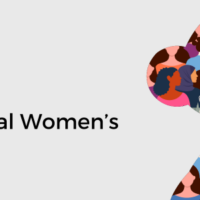
ACAMS Today spoke with Luis Alvarez, CAMS, head of compliance, Americas Region, Western Union and Money Transmitter Alliance (MTA) president, about the formation of the MTA and the MTA’s mission and goals.
ACAMS Today: How was the idea of an MTA conceived?
Money Transmitter Alliance: The Money Transmitter Alliance, or MTA, was organized to combat money laundering, terrorist financing and other illicit activity, which remain a serious collective challenge for the financial services industry, requiring both significant investment and effort to counteract. Regulators have also requested the industry find a solution to help prevent “agent hopping” from happening. As players in the payments space, all of us have a critical role to play in upholding the highest standards of integrity in our business, to protect our consumers and to protect our systems from abuse. Adopting a multi-agency collaborative approach is the most effective path toward addressing these shared challenges.
AT: Tell us about the MTA’s mission and overall goals?
MTA: The Alliance is currently comprised of six money services business (MSB) members who, together, have recently launched a new collaborative tool to strengthen industry-wide compliance best practices, known as the Industry Agent Database. This database has been developed for the purpose of voluntarily sharing information on potential “bad actors” looking to offer MSB services.
AT: You mentioned the MTA’s Industry Agent Database, what is the purpose of the database and how will it help MTA members?
MTA: It is a first-of-its-kind resource for the MSB industry and can be leveraged by members during the onboarding process or as an additional due diligence check when evaluating entities looking to act as an agent to offer payment services. Using the database, a member entity can easily see if new agent applicants have been previously terminated by another participating member for reasons ranging from payment misappropriation to agent complicity.
The overall goal of the MTA database is to prevent “agent hopping” by agents that have had their partnership with another MSB terminated due to compliance-related concerns and help maintain the integrity of the financial system.
AT: How would the MTA’s Industry Agent Database be useful for banks and other financial institutions (FIs)?
MTA: Using the database, a member can easily see if new agent applicants have been previously terminated by another participating member MSB for illicit or questionable activity. Below are examples of what an MTA member can do:
- When onboarding a new agent, MTA members can search the database to see if agents have been reported by another member MSB. If there is a match, they can reach out to the record owner MSB through the 314(b) process for additional information.
- The database is continuously populated as members terminate agents for compliance reasons.
- In addition to utilizing the database during the onboarding of new agents, MTA members can also check active agents against the database on an ongoing basis (e.g., monthly or yearly).
AT: How will the MTA’s Industry Agent Database increase partnerships between MSBs, banks, law enforcement and other FIs?
MTA: The database leverages information held by members, a number of whom are industry leaders, to strengthen collaboration and information sharing and, ultimately, deter illicit activity at an industry-wide level.
By enabling exclusive access to the MTA database, the database can enhance a member’s anti-money laundering, fraud and counter-terrorist financing programs and protect the respective organization against illicit activity and the exploitation of services by criminal or complicit agents.
This, combined with the information sharing powers offered via the 314(b) program, serves as an opportunity to increase collaboration and partnerships continually.
AT: What is the process to become a member of the MTA?
MTA: Any person or organization that is registered with the Financial Crimes Enforcement Network (FinCEN) under the 314(b) program as an FI that intends to share information under Section 314(b) may apply to become a member. The first step is the completion of a membership agreement that then goes to the MTA board for approval. Once the membership agreement has been approved by the MTA board, new members will be given access to the database. Interested potential members can reach out to LuisM.Alvarez@WU.com and/or Alesya.Casse@WU.com.
AT: Any parting words of wisdom or advice you would like to share with the ACAMS’ membership?
MTA: The MTA is industry-led, on a voluntary basis, but is recognized by FinCEN under 314(b) as a financial association. Please note that all members must also be registered through FinCEN as a 314(b) participant. It is important to note that the database includes strong privacy safeguards, such as restricted access by an encrypted certificate and username/password and a user-friendly interface featuring record matching via 20-plus unique identifier fields.
I believe it is a truly collaborative tool designed to benefit all members, in turn upholding the integrity of the global payments network. In addition, the more companies that join, the bigger the pool of questionable agents in the database and subsequently, the more effective it will be to rid the industry of these bad actors. We would encourage interested banks and cryptocurrency companies to contact the MTA for additional information.










